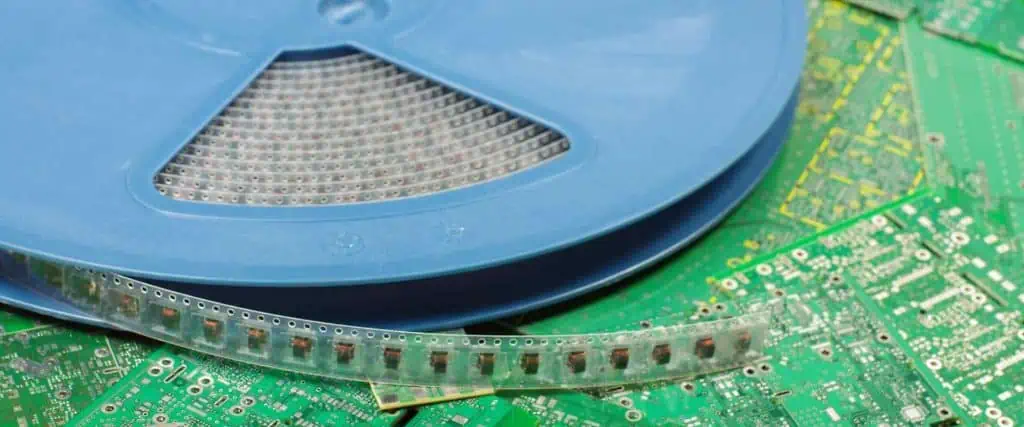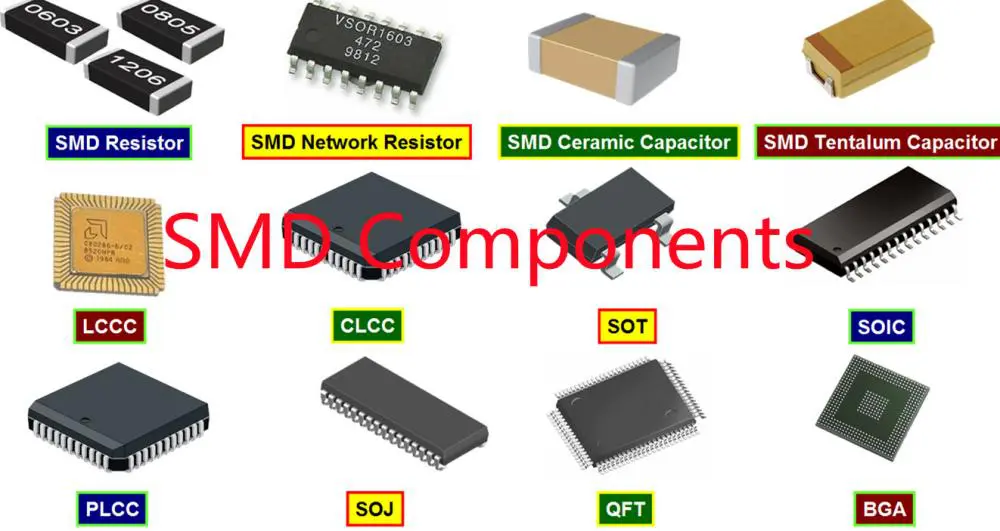In the fast-paced world of electronics manufacturing, efficient component management is crucial for successful PCB production. RayPCB, a leading player in the PCB manufacturing industry, has developed a comprehensive approach to component management that ensures smooth operations, reduces costs, and maintains high-quality standards. This article delves into the strategies and best practices employed by RayPCB for effective component management in PCB manufacturing.
Understanding the Importance of Component Management
The Role of Components in PCB Manufacturing
Components are the building blocks of any printed circuit board. Proper management of these elements is essential for:
- Ensuring product quality
- Maintaining production efficiency
- Controlling costs
- Meeting customer specifications
- Adapting to market demands
Challenges in Component Management
RayPCB faces several challenges in managing components effectively:
- Rapid technological advancements
- Component obsolescence
- Supply chain disruptions
- Inventory management
- Quality control
- Cost fluctuations
RayPCB’s Component Management Strategy

Key Pillars of Effective Component Management
RayPCB’s approach to component management is built on four key pillars:
- Strategic Sourcing
- Inventory Optimization
- Quality Assurance
- Data-Driven Decision Making
Let’s explore each of these pillars in detail.
Strategic Sourcing at RayPCB
Supplier Evaluation and Selection
RayPCB employs a rigorous process for evaluating and selecting suppliers:
- Quality of components
- Reliability of supply
- Price competitiveness
- Technical support
- Compliance with industry standards
Diversification of Supply Chain
To mitigate risks associated with supply chain disruptions, RayPCB maintains a diverse supplier base:
| Component Category | Number of Suppliers | Geographic Distribution |
| Passive Components | 5 .-7 | Asia, Europe, North America |
| ICs | 3. -5 | Asia, North America |
| Connectors | 4. -6 | Asia, Europe |
| Specialized Components | 2. -3 | Global |
Long-term Partnerships
RayPCB focuses on building long-term partnerships with key suppliers, which offers several benefits:
- Preferential pricing
- Priority in times of shortage
- Collaborative problem-solving
- Early access to new technologies
Inventory Optimization
Just-In-Time (JIT) Inventory Management
RayPCB implements a JIT inventory system to reduce carrying costs and improve cash flow:
- Frequent, smaller deliveries
- Reduced warehouse space requirements
- Minimized risk of obsolescence
Safety Stock Management
While adhering to JIT principles, RayPCB maintains safety stocks for critical components:
| Component Criticality | Safety Stock Level |
| High | 4-6 weeks |
| Medium | 2-3 weeks |
| Low | 1-2 weeks |
Demand Forecasting
Accurate demand forecasting is crucial for inventory optimization. RayPCB uses:
- Historical data analysis
- Customer forecasts
- Market trend analysis
- Machine learning algorithms
Quality Assurance in Component Management

Incoming Quality Control (IQC)
RayPCB’s IQC process ensures that all incoming components meet quality standards:
- Visual inspection
- Dimensional checks
- Electrical testing
- X-ray inspection for advanced components
Supplier Quality Management
RayPCB works closely with suppliers to maintain quality:
- Regular supplier audits
- Continuous improvement programs
- Shared quality metrics and goals
Traceability and Documentation
Maintaining traceability throughout the component lifecycle is crucial:
- Unique identifiers for each component batch
- Detailed records of supplier, date of manufacture, and test results
- Integration with Manufacturing Execution System (MES)
Data-Driven Decision Making
Component Database Management
RayPCB maintains a comprehensive component database:
- Technical specifications
- Pricing history
- Supplier information
- Inventory levels
- Usage statistics
Analytics and Reporting
Leveraging data analytics for informed decision-making:
- Trend analysis for component usage
- Predictive analytics for potential shortages
- Cost analysis and optimization
- Performance metrics for suppliers
Continuous Improvement
RayPCB’s data-driven approach facilitates continuous improvement:
- Regular review of key performance indicators (KPIs)
- Identification of bottlenecks and inefficiencies
- Implementation of process improvements
Advanced Technologies in Component Management
Automated Storage and Retrieval Systems (AS/RS)
RayPCB utilizes AS/RS for efficient component storage and retrieval:
- Increased storage density
- Improved accuracy in picking
- Real-time inventory tracking
RFID Technology
Implementation of RFID for enhanced tracking and management:
- Automated inventory counts
- Improved traceability
- Reduced human error in component handling
Artificial Intelligence and Machine Learning
Leveraging AI and ML for smarter component management:
- Predictive maintenance for storage systems
- Optimized inventory levels based on multiple factors
- Anomaly detection in component quality and supply chain
Strategies for Managing Component Obsolescence

Proactive Monitoring
RayPCB actively monitors the lifecycle status of components:
- Regular checks with manufacturers
- Subscription to component lifecycle databases
- Collaboration with distributors for early notifications
Last-Time Buy Decisions
When a component is nearing end-of-life:
- Assess future demand
- Evaluate redesign options
- Make informed last-time buy decisions
Alternate Component Qualification
Maintaining a pipeline of qualified alternates:
- Regular evaluation of potential replacements
- Cross-reference databases
- Collaboration with design teams for compatibility assessment
Environmental Considerations in Component Management
RoHS and REACH Compliance
Ensuring compliance with environmental regulations:
- Strict supplier requirements for RoHS and REACH compliance
- Regular audits and testing
- Maintenance of compliance documentation
Sustainable Sourcing
RayPCB’s commitment to sustainability in component sourcing:
- Preference for suppliers with strong environmental policies
- Consideration of component recyclability
- Reduction of packaging waste
Cost Management Strategies
Total Cost of Ownership (TCO) Analysis
RayPCB considers the TCO when making component decisions:
| Cost Factor | Considerations |
| Purchase Price | Initial cost of the component |
| Quality Cost | Potential rework, warranty claims |
| Logistics Cost | Shipping, handling, customs |
| Inventory Cost | Storage, obsolescence risk |
| Lifecycle Cost | Longevity, reliability |
Volume Pricing Negotiations
Leveraging purchasing power for better pricing:
- Consolidation of orders across projects
- Long-term pricing agreements
- Volume-based discount tiers
Value Engineering
Collaborating with design teams for cost-effective solutions:
- Component standardization across products
- Evaluation of lower-cost alternatives
- Design for manufacturing considerations
Training and Skill Development
Continuous Learning Programs
RayPCB invests in ongoing training for component management staff:
- Technical skills (e.g., component identification, testing)
- Software proficiency (e.g., ERP systems, analytics tools)
- Supply chain management principles
Cross-functional Collaboration
Encouraging knowledge sharing across departments:
- Regular meetings between procurement, engineering, and production teams
- Job rotation programs
- Collaborative problem-solving sessions
Future Trends in Component Management
RayPCB is preparing for future challenges and opportunities:
- Integration of blockchain for enhanced traceability
- Adoption of digital twin technology for inventory management
- Increased use of 3D printing for rapid prototyping and small-batch production
- Enhanced cybersecurity measures for protecting component data
Frequently Asked Questions (FAQ)
Q1: How does RayPCB handle component shortages in the global supply chain?
A1: RayPCB employs a multi-faceted approach to mitigate the impact of component shortages:
- Maintaining a diverse supplier base to reduce dependency on a single source.
- Implementing an early warning system that monitors market trends and potential shortages.
- Utilizing safety stocks for critical components.
- Collaborating closely with customers to forecast demand accurately.
- Exploring alternative components and redesign options when necessary.
- Leveraging long-term partnerships with key suppliers for priority allocation during shortages.
Q2: What strategies does RayPCB use to ensure the authenticity of components and prevent counterfeits?
A2: RayPCB takes several measures to ensure component authenticity:
- Sourcing directly from authorized distributors or manufacturers whenever possible.
- Implementing rigorous supplier vetting processes.
- Conducting thorough incoming quality control, including visual inspection, electrical testing, and X-ray analysis for suspicious components.
- Utilizing specialized equipment for detecting counterfeit components.
- Maintaining detailed traceability records for all components.
- Training staff on identifying potential counterfeit indicators.
- Participating in industry anti-counterfeiting initiatives and sharing information with peers.
Q3: How does RayPCB balance the need for just-in-time inventory with the risk of supply chain disruptions?
A3: RayPCB achieves this balance through:
- Implementing a hybrid inventory model that combines JIT principles with strategic safety stocks.
- Utilizing advanced demand forecasting tools to optimize inventory levels.
- Maintaining close relationships with multiple suppliers to ensure supply chain flexibility.
- Regularly reviewing and adjusting safety stock levels based on component criticality and market conditions.
- Implementing robust risk management strategies, including scenario planning for potential disruptions.
- Leveraging data analytics to identify trends and potential issues in the supply chain.
Q4: What approach does RayPCB take to manage component obsolescence?
A4: RayPCB’s approach to managing component obsolescence includes:
- Proactive monitoring of component lifecycles through manufacturer notifications and industry databases.
- Regular review of the bill of materials (BOM) for all products to identify at-risk components.
- Collaboration with engineering teams to qualify alternative components before obsolescence occurs.
- Strategic last-time-buy decisions based on forecasted demand and product lifecycle.
- Design for longevity principles in new product development to minimize obsolescence risk.
- Maintaining relationships with specialized suppliers of obsolete or hard-to-find components.
Q5: How does RayPCB ensure environmental compliance in its component management practices?
A5: RayPCB ensures environmental compliance through:
- Strict adherence to RoHS, REACH, and other relevant environmental regulations.
- Regular audits of suppliers to verify compliance with environmental standards.
- Maintaining up-to-date documentation on the environmental compliance of all components.
- Investing in testing equipment to verify compliance in-house.
- Training procurement and quality control staff on the latest environmental regulations.
- Collaborating with customers to meet specific environmental requirements for their products.
- Continuously monitoring changes in global environmental regulations and adjusting practices accordingly.
